Another batch from our National Fisherman collection of about 15,000 photos, all of which we’ve scanned and have posted on our website. Enjoy, be sure to zoom in for details, and email me if you’d like to purchase one or more of our high-quality prints.———Kevin Johnson, Photo Archivist, Penobscot Marine Museum.
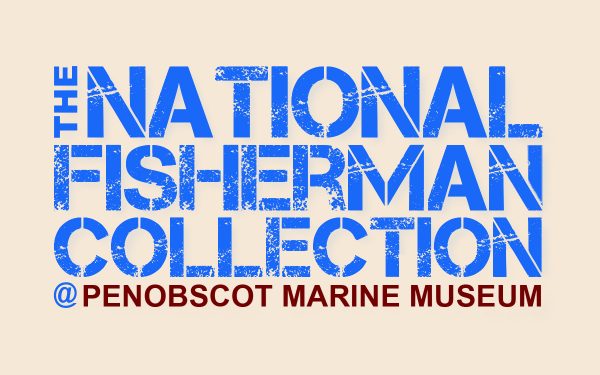
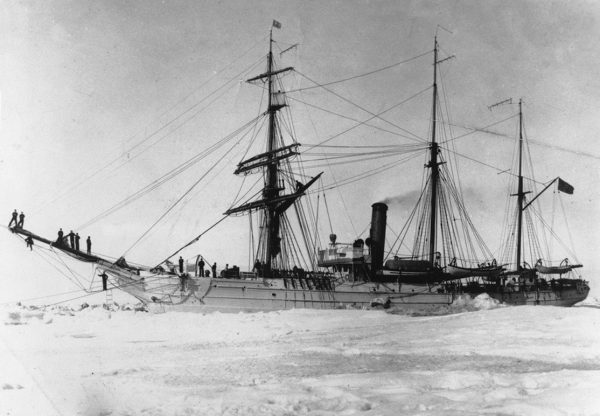
Revenue Cutter BEAR Icebound, 1884. This is the 190-foot wooden-hulled steam barkentine (an ex-Scottish sealer) that rescued the survivors of the Greely Expedition from Baffin Island in 1884. Her sister-ship PROTEUS had dropped off this group of scientific observers three years earlier, in 1881. Of the 25 men, led by Lt. Adolphus Greely, only seven (including Greely) lived through the ordeal. BEAR went on to more rescue work, to explore the Antarctic, to serve as a museum, to star in a movie, and to return to sealing. She was finally lost in 1963, at age 89, off Sable Island while being towed—on her way to becoming a floating restaurant in Philadelphia. (LB2012.15.1948)
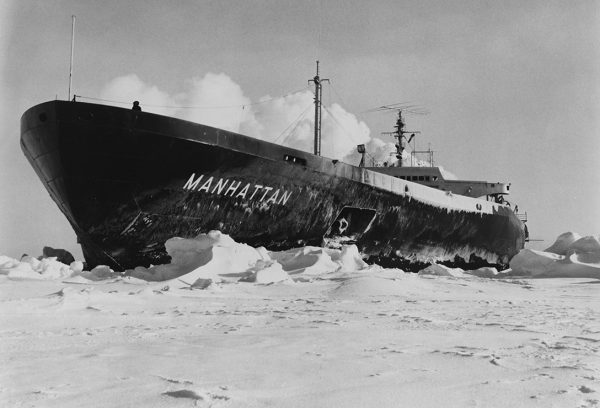
SS MANHATTAN off Baffin Island, 1969. Before the Trans-Alaska pipeline, the idea of delivering Prudhoe Bay oil by tanker via the Northwest Passage was given a chance. A new 65′ ice-breaking bow was added to the six-year old 940-foot supertanker MANHATTAN and she made the historic east-to-west passage as the first commercial vessel ever to do so. But, with difficulty beyond just ice. Canada claimed rights to the waterway, and native Eskimos had to officially grant permission for the passage. The Esqimos also challenged the icebreaker’s crew to snowmobile races—and won! (LB2012.15.1191)
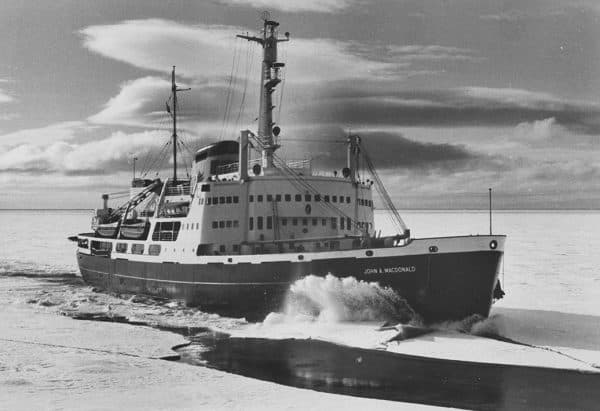
Icebreaker JOHN A. MACDONALD, 1969. This 315-foot Canadian Coast Guard heavy icebreaker assisted the MANHATTAN’s Northwest Passage transit, using her power and three propellers to help clear the way. (LB2012.15.1168)
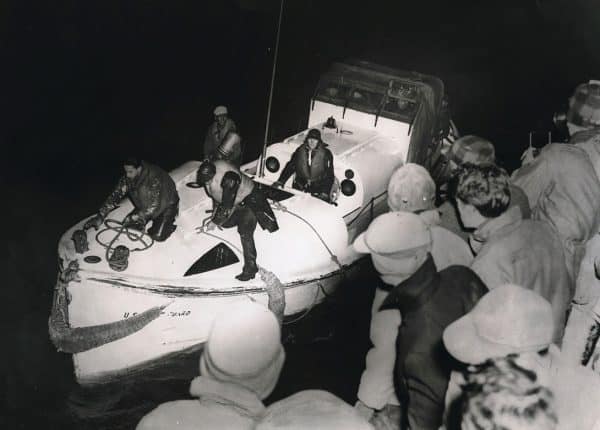
Winter rescue by USCG 36500, 1952. U.S.Coast Guard 36-foot motor lifeboat 36500 returning to the Chatham, MA, fish pier after having rescued 38 people from the stranded stern of the 500-foot T-2 tanker PENDLETON which had broken in two during a February gale off the southern tip of Cape Cod. The book and later the movie The Finest Hours memorialized this legendary event, and the lifeboat, restored in 2009 by The Orleans Historical Society , is still going. (LB2012.15.1967 Photo by Richard C. Kelsey, from National Fisherman, November, 1982, page 182)
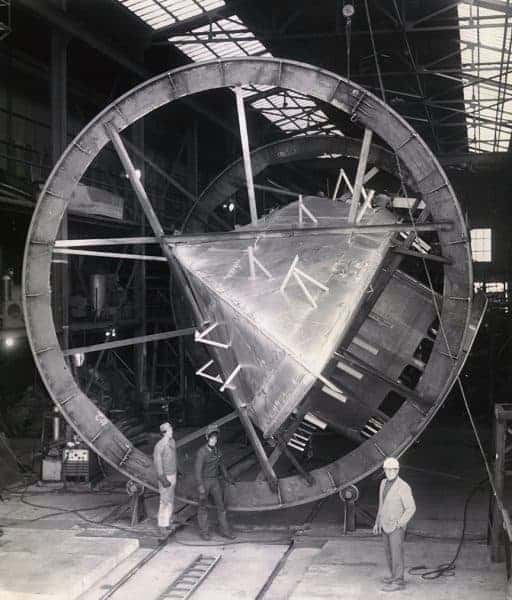
Rotator Jig at Work, 1976. Ever coming up with new ways of doing things, Luther Blount (at right) watches his rotator jig at work as it rolls a hull upright after plating. Blount Marine of Warren, RI, has built around 350 steel and aluminum vessels of all sizes beginning in 1949. (LB2012.15.2173 from National Fisherman, March, 1976, page 7-C)
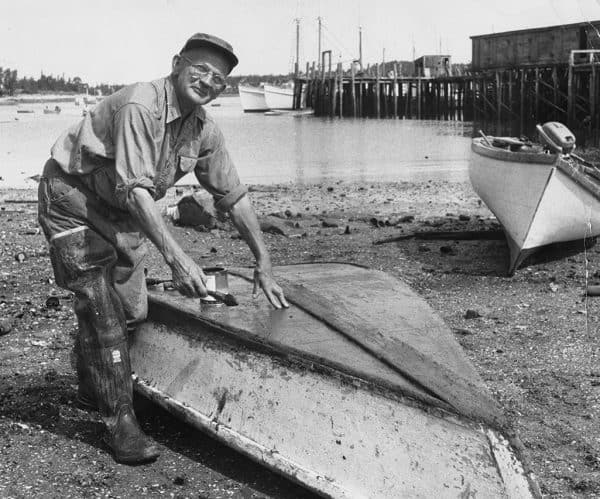
Painting the Bottom, 1958. To reach and return from the water’s edge except at high tide, a lobsterman’s skiff had to be dragged over sand, barnacles, and shells. It’s cedar-planked bottom took a beating. This man added a layer of plywood, probably bedded in roofing tar, over the worn-out bottom to strengthen it and help with the leakage. This low-tide photo is somewhere in mid-coast Maine. (LB2012.15.2433 from Maine Coast Fisherman, September, 1958)
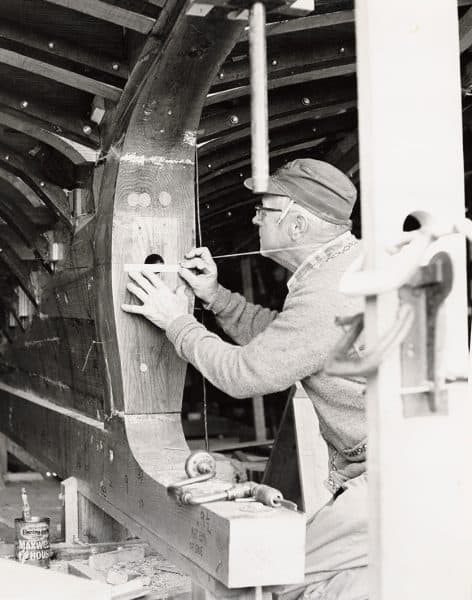
Propeller Shaft Alignment, 1971. The tight string leads forward to the engine and represents the centerline of the propeller shaft. But before the shaft can be installed, Ken Hudson has to set up a boring bar on these same centers and enlarge the hole to the correct size. (LB2012.15.2855 from National Fisherman, October, 1971, page 13-B)
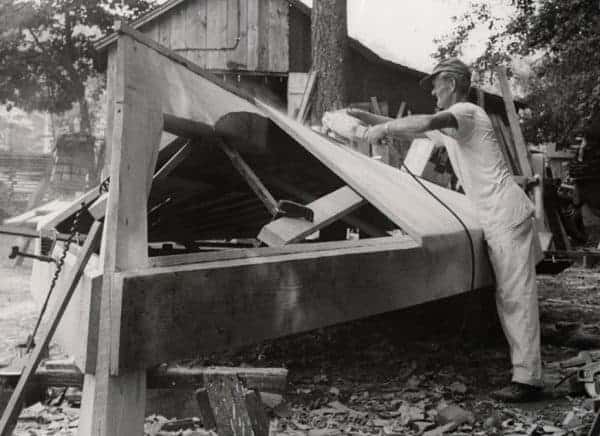
Deadrise Construction, Deltaville, VA, 1968. V-bottomed watercraft of the Chesapeake, known as deadrises, begin upside down with their chines positioned waist high and their stems poking into a hole in the ground. It’s the best way to lay up and fasten their cross-planked bottoms. Soon, for framing and planking the topsides and for completing the boat, this partly-finished hull will be turned rightside up. She’s a Deltaville-built 40-footer destined to fish across the Bay at Smith Island, VA. (LB2012.15.1786 Photo by John Frye, from National Fisherman, December, 1968, page 3-B)
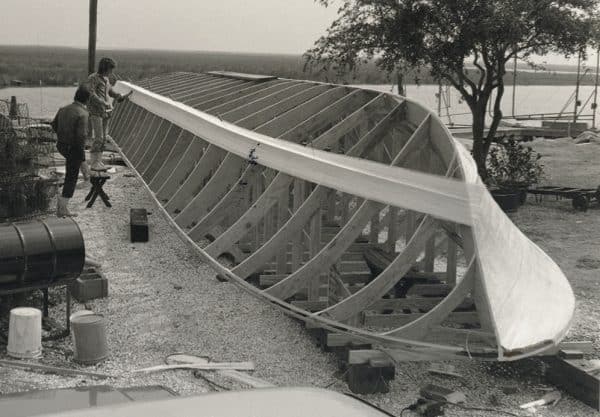
Upside-down Construction. Another hull taking shape upside down where planking can be done efficiently and in comfort. Unstated location, but mid-Atlantic is likely. (LB2012.15.2895 Photo by Dag Pike)
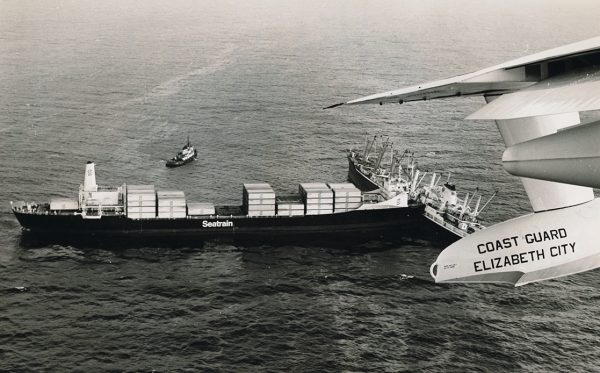
Cape Hatteras Collision, 1972. This view from a Coast Guard plane shows the bow of the US-registered containership TRANS-HAWAII embedded into the port side of the bulk carrier REPUBLICA de COLOMBIA after the latter lost steering and became a target. The two collided off Cape Hatteras, NC, on September 14, 1972 and drifted like this until a salvage tug pulled them apart next day. Four injured, another missing, and some 24,000 gallons of oil spilled. (LB2012.15.1681 USCG photo)
In 2012, Diversified Communications of Portland, ME, donated National Fisherman magazine’s entire pre-digital photographic archive to the Penobscot Marine Museum (PMM). Although the Museum has Fair Use rights to the images, responsibility for determining the nature of copyright and obtaining permissios to publish, transmit or reproduce these materials rests entirely with the researcher.
. . . sign up to the right to get immediate access to this full post,
plus you'll get 10 of our best videos for free.
Get Free Videos& Learn More Join Now!!for Full Access Members Sign In


Harry Bryan says:
The John A. MacDonald was a well run ship. In 1968 I was stationed on the U.S. ice breaker “Glacier”. We were about to leave Long Beach, California for duty in Antarctica when we were ordered to head north to the Bearing Sea as one of the wind class ice breakers ( I think the “Northwind”) was stuck in the ice with winter coming on. After a long and rough trip at our top speed of 13 knots we came in sight of the “Northwind”. Unfortunately, our rolling tanks were not functioning and we, too, became lodged in the ice. Over the horizon came the “John A. MacDonald”. She steamed in a circle around the “Northwind”, then around the “Glacier”breaking us both free with her rolling tanks functioning perfectly. I remember feeling a bit of jealousy as her crew, in civilian clothes, saluted us with their coffee cups as the MacDonald headed off.
Steve Stone says:
Wow. Loved reading this, Harry.
Harry Bryan says:
Although nowhere near as dramatic as the rescue shown here, I spent a long night on this same 36′ lifeboat in April of 1966. I was just out of boot camp and stationed at Chatham. We got a call to take a crew member off a fishing vessel with suspected appendicitis. After getting the sick man aboard in pitch black and thick fog our steering gear failed. The engineer was incapacitated with sea sickness and I spent the night on the rounded top of the turtleback steering with a cold and heavy emergency tiller while the bosun pointed right or left as he peered at the radar. We never saw a thing until we tied up at the station. I was allowed to sleep in the next morning.
Joseph Greeley says:
Lovely shot of the BEAR. Adolphus Greely is a relative of mine although his last name is spelled with only two ‘e’s rather than three . . .
David Tew says:
I’ve been looking through the PMM’s collections online but this way is much better. Thanks for selecting, ‘curating’ and captioning everything!